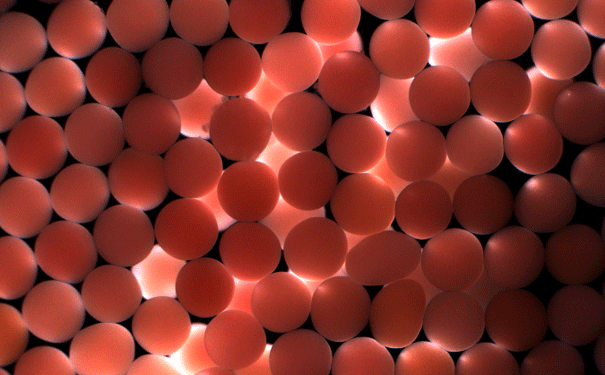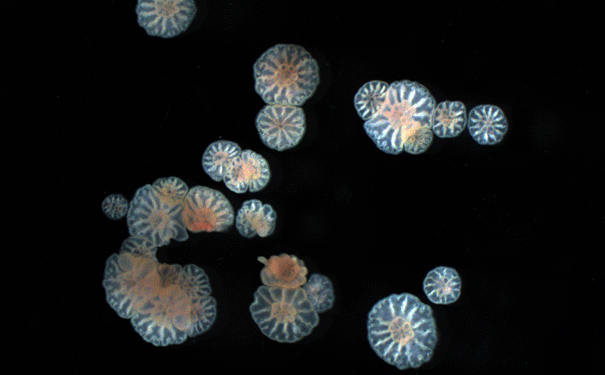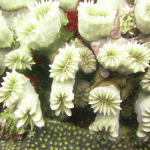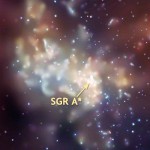
The coral eggs before fertilisation. Image: Andrew Heyward and Andrew Negri/AIMS
Corals can reproduce in different ways on dark, stormy nights.
Scientists have shown for the first time that coral offspring are able to form genetic clones of themselves before they develop into adult corals. This previously unknown reproductive strategy adds another dimension to our understanding of their life cycles.
Coral ‘offspring’ are usually the result of sexual reproduction, where the eggs are fertilised either before or after being released by the parent coral into the surrounding water. But when the parents are broken apart by storms, the remnants form ‘clones’, which are able to survive as independent individuals.
Dr Andrew Heyward and Dr Andrew Negri from the Australian Institute of Marine Science suspected the fertilised coral offspring may also be able to break apart, as these embryos lack a protective outer-layer or membrane. “We have observed over many years of spawning and culturing corals that the embryos are extremely fragile — when they get beyond the eight-cell stage it is often more difficult maintain their integrity,” Negri said.
The researchers thought that these fragmented embryos would just die, but were curious to see whether they could develop into coral larvae. In the study they mimicked the small breaking waves generated by moderate wind speeds gently pouring the corals embryos over a 30 cm fall into seawater.
The outcome was the resulting in fragmentation of almost half of the embryos. To the surprise of the researchers, many of the fragments began to settle and develop in the same way as their intact siblings.

Coral polyps attached to a surface after fragmentation. The smaller polyps developed from fragmented embryos (clones). Image: Andrew Heyward and Andrew Negri/AIMS
“We were able to maintain the fragmented cells in culture and observed that they re-organised and developed normally into swimming coral larvae. They were smaller than normal larvae but they were able to attach to the solid surfaces and metamorphose into coral polyps,” Negri said.
It appears the lack of membrane isn’t an accident. Corals can produce over 100,000 eggs from a single colony, but fragmentation may increase the number of larvae from fertilised eggs.
“Waves of this high or greater are very common during the nights of spawning along the Great Barrier Reef so it is very likely that coral clones will be generated in large numbers on these windy nights,” Negri said.
— Laura Boness






